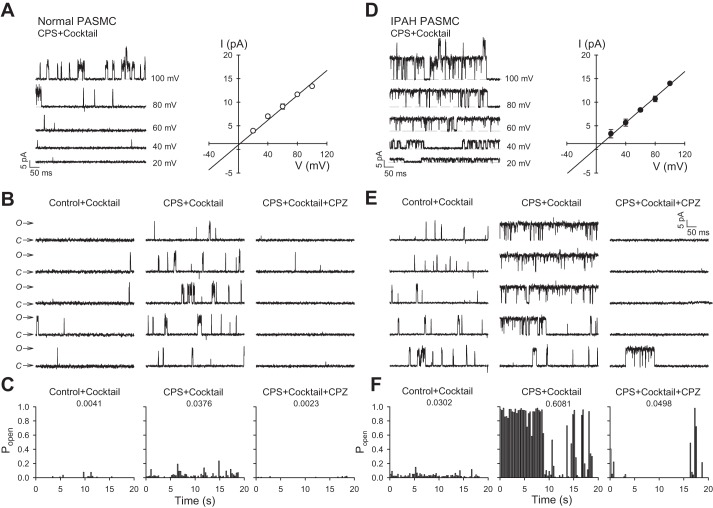Fig. 3.
K+ and Cl- channels do not contribute to the capsaicin-mediated activation of single-channel currents in membrane patches of human PASMCs. Inhibitor cocktail (IC) comprised of 1 µM paxilline, 100 nM apamin, 2 mM tetraethylammonium (TEA), and 50 µM niflumic acid (NFA) were added to the pipette A: representative current records for normal PASMCs and IPAH PASMCs in a cell-attached membrane patch at various test potentials ranging from +20 to +100 mV in 20 mV steps (A and D, left). Composite current-voltage relationship (I-V curve) indicates the slope conductance of this capsaicin-sensitive channel is 131 pS for normal PASMC and 135 pS for IPAH PASMCs (A and D, right). B and E: representative unitary currents in a cell attached membrane patch elicited by a sustained depolarization at +80 mV for normal PASMCs (B) and IPAH PASMCs (E) exposed to vehicle (control+cocktail), 1 µM capsaicin (CPS+cocktail) or 1 µM capsaicin plus 10 µM capsazepine (CPZ) plus inhibitor cocktail (CPS+cocktail+CPZ). C and F: bar graphs showing the steady-state open probability [P(o)] of normal PASMCs (C) and IPAH PASMCs (F) as a function of time for the sample recordings in B and E, respectively. n = 3–4 cells per group.

